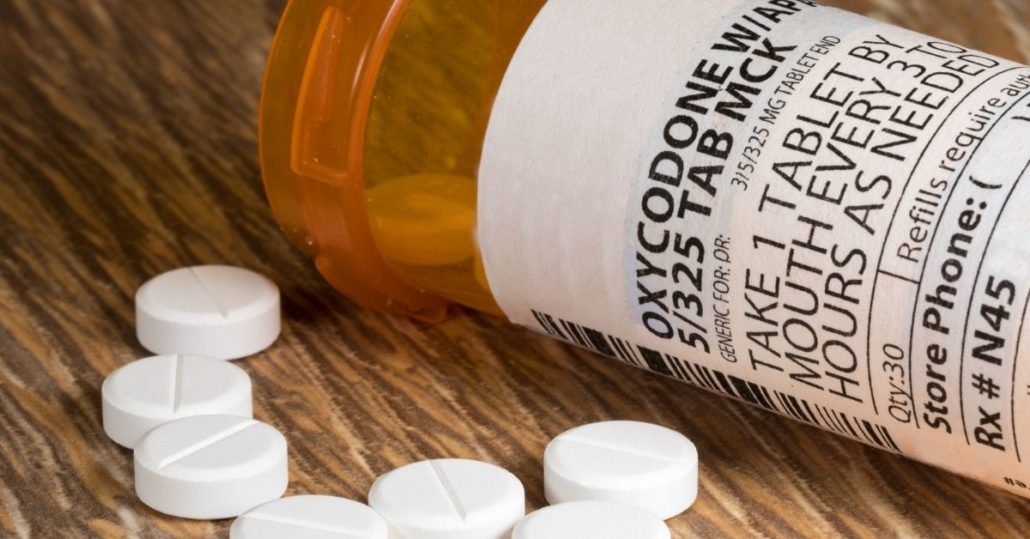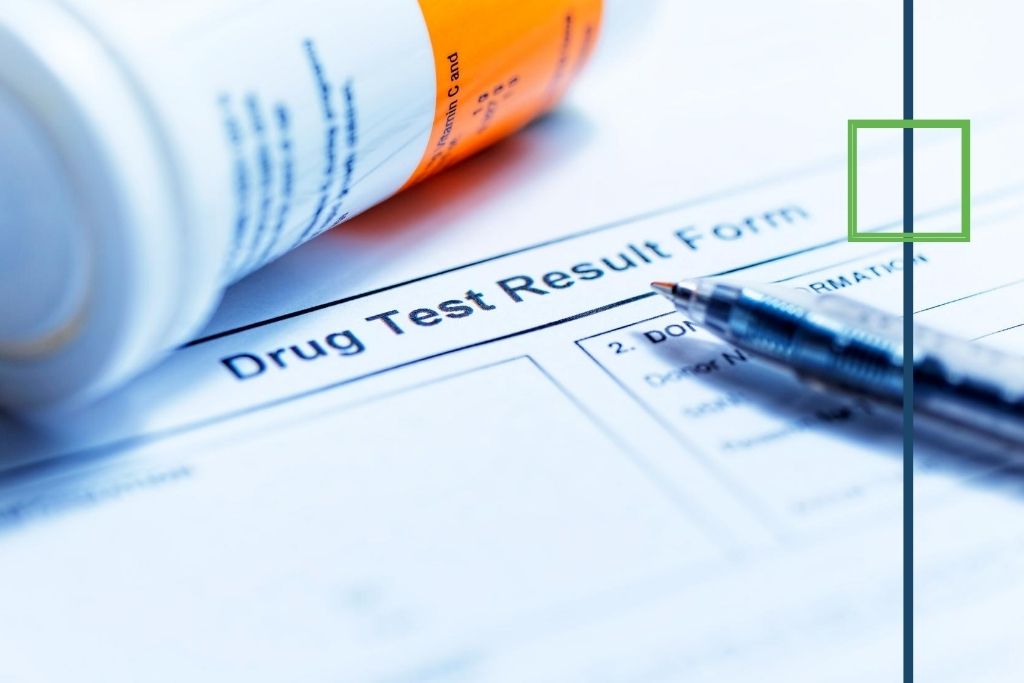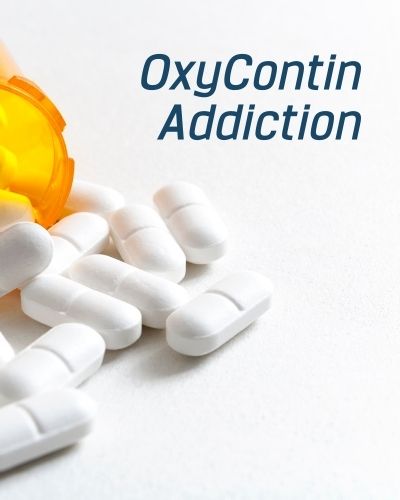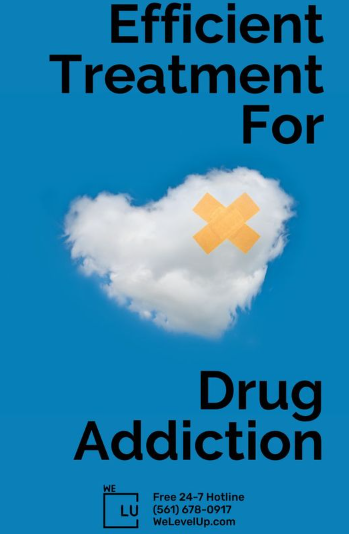Oxycodone Half Life, How Long Does Oxy Stay in System?
Oxycodone is an opioid drug used to relieve moderate to severe pain in adults who can’t be treated with other pain medications. Oxycodone may be prescribed following an injury, trauma, or major surgery. A medication’s half-life is the time it takes for the body to metabolize and excrete half of one dose. The number of different oxycodone products and combinations with other pain medications makes it difficult to generalize the half-life of oxycodone.
What is the half life of oxycodone? Oxycodone, in general, is a relatively short-acting opioid with a half-life of about 2.5 hours. However, this can change when oxycodone is combined with another medication or if it’s an extended-release formulation. Also, because every person metabolizes this medication differently, your age, genetics and other factors can all impact the half-life of oxycodone in your body.
Due to the high risks associated with oxycodone misuse and addiction, drug tests are commonly used by doctors, employers and law enforcement to identify oxycodone use. How long is oxycodone detectable in urine and can be detected through various testing methods depends on several factors. Oxycodone can be detected through a variety of tests, though the detection times for oxycodone depend on the type of test administered.
What is Oxycodone Used For?
Why do they prescribe oxycodone?
Doctors prescribe opioids – like hydrocodone, oxycodone, and morphine – to treat moderate to severe pain. Opioids are often prescribed following a surgery or injury or for certain health conditions. These medications carry serious risks of addiction and overdose, especially with prolonged use.
Some patients may experience negative side effects like the ones listed below, even when they take their opioid medication as directed:
- Tolerance—meaning you might need to take more of a medication for the same pain relief
- Physical dependence—meaning you have symptoms of withdrawal when a medication is stopped
- Increased sensitivity to pain
- Nausea, vomiting, and dry mouth
- Confusion
- Sleepiness and dizziness
- Depression
- Itching and sweating
While opioids can be an important part of treatment, they also come with serious risks. That is why it is important to work with your doctor to make sure you are getting the safest, most effective care.
Oxycodone is available in a variety of formulations and in combination with other medications. These formulations range from immediate release to extended release. Some examples include:
- OxyContin: Extended-release oxycodone
- Percocet: Immediate-release oxycodone and acetaminophen
- Roxicet: Immediate-release oxycodone
- Percodan: Immediate-release oxycodone and aspirin
- Oxycet: Immediate-release oxycodone and acetaminophen
What is Oxycontin?
Oxycodone is a prescription pain medication. OxyContin is a brand name for oxycodone. When it comes to OxyContin vs oxycodone, the primary difference is that OxyContin is a controlled-release oxycodone medication. Pain-relief properties are released over several hours instead of all at once, which is what oxycodone does. Both oxycodone and OxyContin have a high potential for abuse because of they produce euphoria effects when taken in large doses.
Oxycontin Half Life
What is the half life of Oxycontin? The mean apparent elimination half life of OxyContin is 4.5 hours, which leads to steady state being achieved in about one day. The active drug and its metabolites are excreted in urine. How long does oxycontin stay in urine? it can be detected in urine, saliva, and hair for longer periods, and may, therefore, show up on a drug test. OxyContin can be detected in saliva for 1-4 days after your last dose, in urine for 3-4 days after your last dose, and in hair up to 90 days after the last dose.
Skip To:
- Oxycodone Half Life, How Long Does Oxy Stay in System?
- What is Oxycodone Used For?
- What is Oxycontin?
- Oxycontin Half Life
- What Is Roxy?
- How Long Does Roxy Stay in Your System?
- Oxycodone Abuse Statistics
- Oxycodone Drug Facts Sheet
- How Does Oxycodone Work?
- Factors Affecting Oxycodone Half Life
- How Is Oxycodone Metabolized?
- How Long Does It Take for Oxycodone to Kick In?
- How Long Does Oxy Stay in System?
- How Long Does Oxycodone Stay in Your Urine?
- How Long Does Oxycodone Stay in Your Blood?
- How Long Does Oxycodone Stay in Your Saliva?
- How Long Does Oxycodone Stay in Your Hair?
- Is Oxycodone Addictive?
- Oxycodone Abuse
- Oxycodone Abuse Treatments
Learn More:
What Is Roxy?
Roxicodone (often called “roxies”, “roxys” or “blues”) is one of the brand names for oxycodone, a powerful opioid prescription painkiller. Roxicodone is prescribed to alleviate pain that cannot be managed by non-opioid pain relievers. As a potent semi-synthetic opiate derived from morphine, Roxicodone produces effects similar to those of heroin (e.g., euphoria and sedation), especially when misused. While it is extremely effective at relieving severe pain, it also has a high potential for abuse and addiction.
How Long Does Roxy Stay in Your System?
In a urine test, Roxicodone use can show up for anywhere from one to three days after previous use. In a blood test, it is based on the plasma half-life of oxycodone. Like other drugs, it will clear in five half-lives or 15–20 hours. In a saliva test, oxycodone may be detectable for one to two days after previous use.
Get Help. Get Better. Get Your Life Back.
Searching for Accredited Drug & Alcohol Rehab Centers Near You? Or Mental Health Support?
Even if you have failed previously, relapsed, or are in a difficult crisis, we stand ready to support you. Our trusted behavioral health specialists will not give up on you. Call us when you feel ready or want someone to speak to about therapy alternatives to change your life. Even if we cannot assist you, we will lead you wherever you can get support. There is no obligation. Call our hotline today.
FREE Addiction Hotline – Call 24/7Oxycodone Abuse Statistics
Because prescription painkiller use is generally accepted in society, it can be challenging to identify or address Oxycodone abuse. Especially in the cases of legitimate prescriptions, it can be hard to tell the difference between an acceptable dose and abuse. Ultimately, it comes down to the negative consequences that the drug has on the user’s life. A good telltale sign of abuse is when an individual runs out of their prescription before their next script is available for refill.
$21 billion
There’s been more than $21 billion worth of OxyContin sold in the US since 2010.
Source: NIDA
13 million Americans
According to the United States Department of Justice, more than 13 million Americans abuse Oxycodone, including some children as young as 12 years old.
Source: NIDA
2.4%
As of 2020, 2.4% of 12th graders had used OxyContin within the past year.
Source: NIDA
Oxycodone Drug Facts Sheet
What is Oxycodone?
Oxycodone is a semi-synthetic narcotic analgesic
and historically has been a popular drug of abuse
among the narcotic abusing population.
What is its origin?
Oxycodone is synthesized from thebaine, a
constituent of the poppy plant.
What are common street names?
Common street names include:
- Hillbilly Heroin
- Kicker
- OC
- Ox
- Roxy
- Perc
- Oxy
What is its effect on the mind?
Euphoria and feelings of relaxation are the most
common effects of oxycodone on the brain, which
explains its high potential for abuse.
What is its effect on the body?
Physiological effects of oxycodone include:
• Pain relief, sedation, respiratory depression,
constipation, papillary constriction, and cough
suppression. Extended or chronic use of oxycodone
containing acetaminophen may cause severe liver
damage
What are its overdose effects?
Overdose effects include:
• Extreme drowsiness, muscle weakness, confusion, cold and clammy skin, pinpoint pupils, shallow breathing, slow heart rate, fainting, coma, and possible death
How Does Oxycodone Work?
Oxycodone works by activating opioid receptors. These receptors are found throughout the body, particularly in the brain and central nervous system. When oxycodone activates the receptors, it changes how pain signals are sent from the body to the brain. The activation can also cause a slowdown in the central nervous system, including breathing, heart rate and blood pressure.
Oxycodone is a central nervous system depressant. If someone takes a dose that’s too large or takes multiple doses too close to one another, they can overdose. An opioid overdose has symptoms such as limited breathing and changes in heart rate due to the depressant’s effects.
Sometimes, people using oxycodone may feel euphoric or experience pleasant feelings from the medication because of its effects on the brain and neurotransmitters. These effects are one reason there’s a risk of developing an addiction while taking oxycodone.
Factors Affecting Oxycodone Half Life
How long it takes for your body to clear Oxycodone depends on several factors, including:
Age: Older people above the age of 65 take longer to clear oxycodone from the body compared to younger people. Blood concentrations of oxycodone can be up to 15% higher in elderly people. Doctors dose the drug accordingly when prescribing it to those above the age of 65.
Gender: The OxyContin package insert states that for unclear reasons the blood concentration of oxycodone can be up to 25% higher in women compared to men.
Liver and kidney function: Oxycodone is eliminated from the body by the liver and kidneys. In people with liver and kidney dysfunction, the elimination of the drug can be slowed by 1-2 hours, meaning it takes such individuals longer to clear oxycodone from their system.
Tolerance: People who have been taking oxycodone for some duration may take longer than new users to clear the drug from their system. This is because oxycodone tends to accumulate in the fatty tissues over time and takes longer to be completely cleared.
Alcohol consumption: Alcohol is a central nervous system depressant like opioids. Therefore, people who consume alcohol along with oxycodone may take longer to clear both substances from the body. It is worth remembering that consuming alcohol and opioids together can lead to dangerous side effects, including a potentially lethal overdose.
Drug interactions: The body clears oxycodone through a pathway called the cytochrome P450 3A. Certain other drugs like antibiotics (erythromycin) and antifungals (ketoconazole) can interfere with this pathway and make it more difficult for the body to break down oxycodone, resulting in dangerous side effects like respiratory depression. Some other drugs like rifampin can have the opposite effect and may decrease the effectiveness of oxycodone.
How Is Oxycodone Metabolized?
Metabolism describes how the body processes or breaks up a substance until it’s gone or removed from the body. After being ingested, oxycodone is metabolized by the liver into its metabolites — noroxycodone, oxymorphone and noroxymorphone. This happens through chemical reactions with a liver enzyme called cytochrome P450. After being metabolized by the liver, it is eliminated through the urine.
Other medications can speed up or slow down cytochrome P450, significantly impacting oxycodone metabolism. These drug interactions can lead to much higher or lower concentrations of oxycodone metabolites than expected.


Get Your Life Back
Find Hope & Recovery. Get Safe Comfortable Detox, Addiction Rehab & Mental Health Dual Diagnosis High-Quality Care at the We Level Up Treatment Centers Network.
Hotline (877) 378-4154How Long Does It Take for Oxycodone to Kick In?
A variety of factors can influence how long it takes for oxycodone’s effects to be felt, including kidney and liver function, age, other medications or genetics. The formulation of oxycodone is also important, as some are extended-release and others are immediate-release.
Generally, it will take about 10–15 minutes to feel pain relief from immediate-release formulations of oxycodone, like Percocet or Roxicodone. For extended-release formulations like OxyContin, pain relief can take within an hour
Oxycodone is taken by mouth (oral) and should be taken with food. Oxycodone reaches peak concentrations in the bloodstream in roughly one to two hours following ingestion. Extended- and controlled-release formulations can take three to four hours to reach peak concentration in the bloodstream.
Over time, you may build up a tolerance to oxycodone. This means it may take longer to feel the pain relief or the relief may not feel as strong. When this happens, your doctor may want to increase your dose or switch you to a different type of pain medication. Don’t take a larger dose of oxycodone without speaking to your doctor first.
First-class Facilities & Amenities
World-class High-Quality Addiction & Mental Health Rehabilitation Treatment
Rehab Centers TourRenowned Addiction Centers. Serene Private Facilities. Inpatient rehab programs vary.
Addiction Helpline (877) 378-4154Proven recovery success experience, backed by a Team w/ History of:
15+
Years of Unified Experience
100s
5-Star Reviews Across Our Centers
10K
Recovery Success Stories Across Our Network
- Low Patient to Therapist Ratio
- Onsite Medical Detox Center
- Comprehensive Dual-Diagnosis Treatment
- Complimentary Family & Alumni Programs
- Coaching, Recovery & Personal Development Events
How Long Does Oxy Stay in System?
Because of the high risks associated with oxycodone abuse and addiction, drug tests are commonly used by doctors, employers and law enforcement to identify oxycodone use. Oxycodone can be detected through a variety of tests, though the detection times for oxycodone depend on the type of test administered.
How Long Does Oxycodone Stay in Your Urine?
Urine tests are the most commonly used type of drug test. These drug tests can include a variety of substances but do not require specialized personnel, a laboratory or other medical environment. This type of drug testing is also not as invasive as some others, like blood tests. Generally, urine drug screens are also cheaper than other methods. How long do Oxys stay in your urine? Oxycodone is detectable in urine for up to three days after the last use, though it can depend on the frequency of use, dose, and the individual metabolism of the person.
How Long Does Oxycodone Stay in Your Blood?
Drug tests using blood are also sometimes done; however, this type of test requires trained personnel and a medical facility and can be more expensive than other types of tests. Blood tests can be more sensitive and specific, meaning they can often detect medications at a much lower level and better differentiate between specific drugs than some other methods. How long does oxy stay in blood? Oxycodone can be detected in the blood for three to six hours after a dose. Detection using this method can also vary depending on dose, frequency of use and the person’s metabolism.

How Long Does Oxycodone Stay in Your Saliva?
Saliva drug screenings are becoming more popular because these tests are quick and non-invasive. They provide a rapid result in situations where drug use would affect safety, like in roadside testing by law enforcement. How long does oxy stay in saliva? Oxycodone use can be detected in saliva as soon as 15 to 30 minutes after use and up to 34 hours after use.
How Long Does Oxycodone Stay in Your Hair?
Testing for oxycodone in hair cannot indicate the amount of drug in the body or current intoxication, but it can provide evidence that a person was exposed to a drug. Oxycodone’s metabolites can be detected in a hair test up to 90 days after the last use.
World-class, Accredited, 5-Star Reviewed, Effective Addiction & Mental Health Programs. Complete Behavioral Health Inpatient Rehab, Detox plus Co-occuring Disorders Therapy.
CALL (877) 378-4154End the Addiction Pain. End the Emotional Rollercoaster. Get Your Life Back. Start Drug, Alcohol & Dual Diagnosis Mental Health Treatment Now. Get Free No-obligation Guidance by Substance Abuse Specialists Who Understand Addiction & Mental Health Recovery & Know How to Help.
Is Oxycodone Addictive?
Yes, people who use the drug may quickly build up a tolerance. When a tolerance has been built, the drug dosage the person usually takes no longer has the desired effect. So the person using Oxycodone will often have to keep taking more and more of the drug in order to feel high.
Oxycodone addiction can happen quickly. When in pill form, it’s designed to be a time-released pain reliever that can effectively manage pain over an extended period of time. It is most often prescribed to manage short-term severe pain. However, if taken more often than prescribed, crushed up and snorted, or injected in liquid form, the time-release mechanism is broken down. Abusing the drug-using any of these methods greatly increases the likelihood of developing an addiction.
Oxycodone Abuse
Oxycodone abuse can quickly lead to addiction. There is a host of physical, psychological, and behavioral signs and symptoms of oxycodone addiction, such as:
- Itching
- Constipation
- Dry mouth
- Hallucinations
- Abnormal thoughts
- Dilated pupils (during withdrawal)
- Diarrhea (during withdrawal)
- Poor grooming or lack of hygiene
- Becoming secretive about one’s whereabouts
- Being in possession of multiple prescription bottles from different doctors and pharmacies
- Drugged driving

Experience Transformative Recovery at the We Level Up Treatment Center.
See our authentic success stories. Get inspired. Get the help you deserve.



Start a New Life
Begin with a free call to an addiction & behavioral health treatment advisor. Learn more about our dual-diagnosis programs. The We Level Up treatment center network delivers various recovery programs at each treatment facility. Call to learn more.
- Personalized Care
- Caring Accountable Staff
- World-class Amenities
- Licensed & Accredited
- Renowned w/ 5-Star Reviews
We’ll Call You
Oxycodone Abuse Treatments
Prescription Drug Abuse Treatment NJ
There is a strong link between mental health and prescription drug abuse. Individuals who struggle with mood disorders like depression and anxiety are more susceptible to developing an addiction to drugs or alcohol, often to self-medicate symptoms of their underlying mental health condition. These co-occurring disorders can make each other worse without proper treatment.
To determine the most effective ways to treat polysubstance, it’s crucial to first get an accurate assessment of all the symptoms. When the symptoms have been evaluated by a mental health professional, it may be determined that another form of mental condition is present and needs a particular type of treatment. Very often, some combination of psychotherapy, medication, and/or lifestyle changes are effective for coping with functional.
Detox Treatment in New Jersey Rehab Center
The first step in treatment is a medical detox. It will help you navigate the complicated withdrawal process, but it doesn’t address patterns of thought and behavior that contribute to drug abuse. Various treatment approaches and settings can help provide the ongoing support necessary to maintain long-term sobriety after you complete detox.
Cravings are very common during detox and can be challenging to overcome. This often leads to relapse. Constant medical care provided during inpatient treatment helps prevent relapse. Clinicians can provide necessary medication and medical expertise to lessen cravings and the effects of withdrawals.
Psychotherapy
Several different modalities of psychotherapy have been used in the treatment of depression, including:
- Cognitive Behavioral Therapy (CBT) – is an effective treatment that involves making changes in both the patterns of negative thoughts and the behavioral routines which are affecting the daily life of the depressed person for various forms of depression.
- Dialectical Behavioral Therapy – is a comprehensive mental health and substance abuse treatment program whose ultimate goal is to aid patients in their efforts to build a life worth living. The main goal of DBT is to help a person develop what is referred to as a “clear mind.”
- Person-Centered Therapy – is a strategy that allows and encourages clients to understand and resolve their concerns in a safe, supportive environment.

Dual Diagnosis Treatment Centers New Jersey
Substance abuse and mental health disorders often co-occur. In many cases, traumatic experiences can result in a mental health disorder and substance abuse. Dual diagnosis programs in New Jersey treat both of these issues together. The best approach for the treatment of dual diagnosis is an integrated system. In this strategy, both the substance abuse problem and the mental disorder are treated simultaneously. Regardless of which diagnosis (mental health or substance abuse problem) came first, long-term recovery will depend largely on the treatment for both disorders done by the same team or provider.
Medication-Assisted Treatments
Medication-Assisted Treatments (MAT) for substance use disorders and mental health disorders are commonly used in conjunction with one another. This includes the use of medications and other medical procedures. During your rehab, the staff from your treatment facility will help you identify what caused your addiction and teach you skills that will help you change your behavior patterns and challenge the negative thoughts that led to your addiction. Sometimes, the pressures and problems in your life lead you to rely on substances to help you forget about them momentarily.
Now that we’ve answered the question ”How Long Does Oxy Stay in System?” and learned about its addictive properties and the risks that come along with its abuse. It is important to reach out for professional help if you or a loved one are struggling with long-term Oxycodone side effects and addiction. Contact one of our helpful treatment specialists today. We Level Up rehab center in New Jersey can provide information on dual diagnosis and detox programs that may fit your specific needs.
Search Oxycodone Half Life Topics & Resources
Sources
[1] Drug Fact Sheet: Oxycodone (dea.gov)
[2] Oxycodone – StatPearls – NCBI Bookshelf (nih.gov)
[3] Opioids | National Institute on Drug Abuse (NIDA) (nih.gov)
[5] Oxycodone in the Opioid Epidemic: High ‘Liking’, ‘Wanting’, and Abuse Liability – PubMed (nih.gov)
[6] DTMC Research Programs | National Institute on Drug Abuse (NIDA) (nih.gov)
[7] Overdose Death Rates | National Institute on Drug Abuse (NIDA) (nih.gov)
[8] Oxycodone – PubMed (nih.gov)
[9] Oxycodone – Mother To Baby | Fact Sheets – NCBI Bookshelf (nih.gov)
[10] Oxycodone: a pharmacological and clinical review – PubMed (nih.gov)